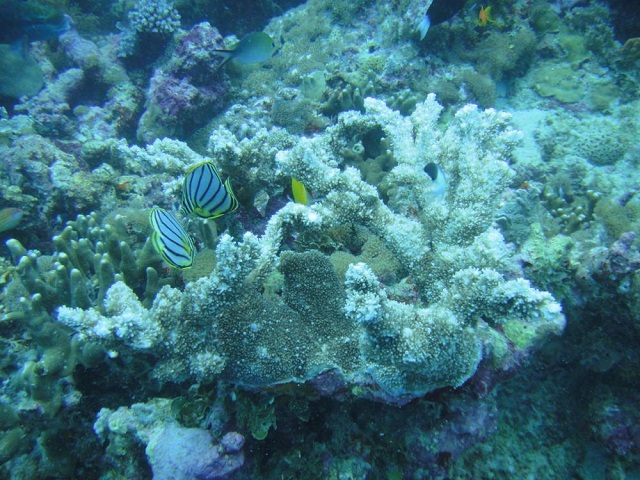Study at Aldabra Atoll sheds light on the profound effects of coral bleaching on reef fish abundance
General |Author: Betymie Bonnelame | October 20, 2023, Friday @ 18:18| 16870 views
The research used reef fish community data collected via SIF's Aldabra reef monitoring programme between 2014 and 2021. (Seychelles Islands Foundation)
(Seychelles News Agency) - A recent study conducted at the remote Aldabra Atoll, one of Seychelles' UNESCO World Heritage sites, has shed light on the profound effects of coral bleaching on reef fish abundance, biomass, and assemblage structure.
According to a press communique from the Seychelles Islands Foundation (SIF), which manages the Aldabra Atoll, the research, published in Frontiers in Marine Science, was led by Dr Anna Koester, a marine researcher at SIF.
The research provides valuable insights into the effects of coral bleaching on marine ecosystems, as well as important considerations on reef fish monitoring survey design.
"Coral bleaching, a consequence of climate change, poses an immediate threat to the reef benthos. However, its impact on fish communities is less well understood, primarily due to delayed effects and the interference of anthropogenic interactions. Coastal communities worldwide rely on reef fish for nutrition and income through fisheries and tourism," said the communique.
The study assessed changes in fish abundance, biomass and community composition before and after the 2015/2016 coral bleaching event on Aldabra.
It used reef fish community data collected via SIF's Aldabra reef monitoring programme between 2014 and 2021 through its dedicated two-tier survey scheme.
Every year, a set list of 84 fish that are widely acknowledged as indicator species due to their sensitivity to anthropogenic pressure, such as fishing or environmental change, are surveyed. Every five years, all fish exceeding a specific size are surveyed to gain a more complete picture of Aldabra's fish communities.
 |
| In the remaining post-bleaching years, fish abundance and biomass did not differ from that before the bleaching event. (Seychelles Islands Foundation) Photo License: All Rights Reserved |
The research showed that shortly following the bleaching event in 2016, the abundance of indicator fish had not changed at 15 metres of water depth compared to data from before the bleaching event.
It showed, however, that at 5 metres depth, fish abundance increased by 77 percent mainly due to herbivorous and omnivorous fish attracted to the higher algae cover growing on dead corals.
In the remaining post-bleaching years, fish abundance and biomass did not differ from that before the bleaching event, which indicates a very resilient fish community.
Koester said that "the data from the extended fish surveys done in 2015 and 2020 showed changes in Aldabra's fish community which we did not detect with the data from the indicator surveys."
She said that both datasets clearly indicated that the fish community composition after the bleaching event differed vastly from that before. This demonstrates the wide-reaching and long-lasting consequences of coral bleaching on the wider coral reef ecosystem – even at a remote and well protected place like Aldabra.
"This research enhances our understanding of how a diverse community of fish responds to mass coral bleaching events and underscores the importance of comprehensive survey methods to detect ecological responses to environmental drivers," she added.
Koester said "SIF therefore also takes very practical steps considering its continuous reef monitoring at Aldabra and is switching to diver-operated stereo-video surveys. This will allow to survey a diverse fish community, whilst making surveying more efficient and consistent through time."
The chief executive of SIF, Dr Frauke Fleischer-Dogley, said, "Studies such as these are valuable to understanding the bigger picture on the impacts to follow on reefs after bleaching events. Through the proof of delayed impact years on, as shown in the study, we can make informed management measures, such as activity closures at specific reefs/sites, or tailoring towards fine-scale survey methods to ensure reef resilience for the region."
Considering that Seychelles is likely to see another major coral bleaching event next year due to the current El Niño, reef communities that are still recovering from the 2015/16 event, are facing yet another test of their resilience.
Back
